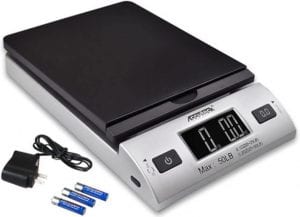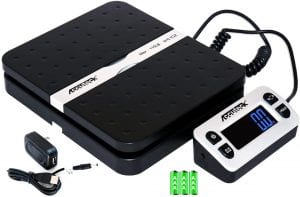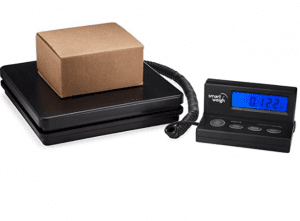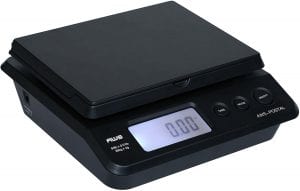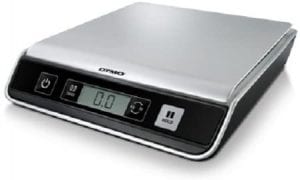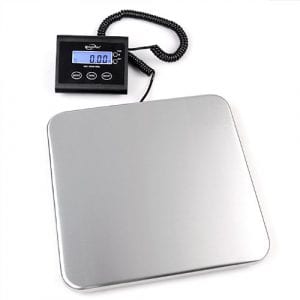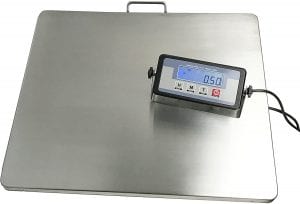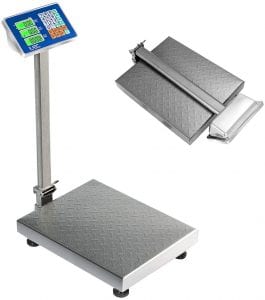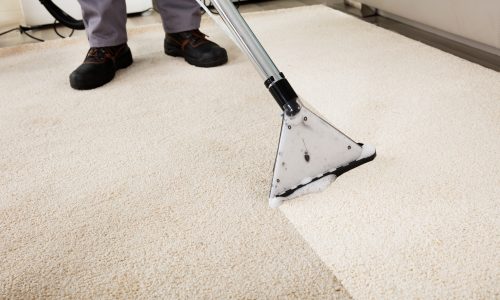The Best Smart Postage Meter
We looked at the top 8 Smart Postage Meters and dug through the reviews from 27 of the most popular review sites including and more. The result is a ranking of the best Smart Postage Meters.
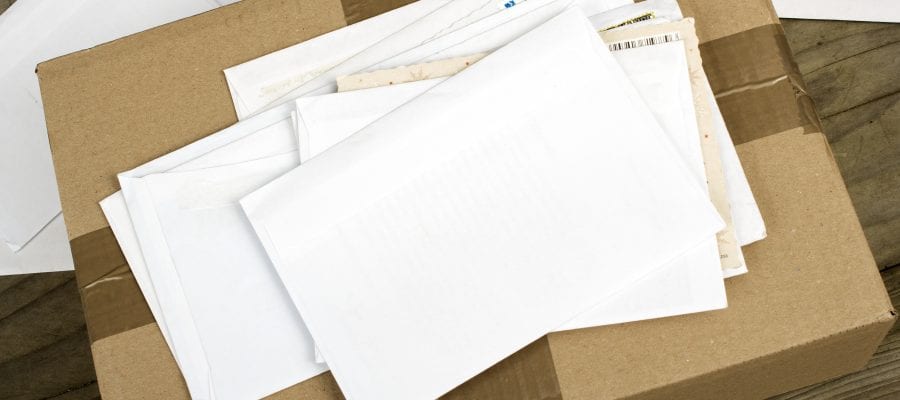
Our Review Process
Don't Waste Your Money is focused on helping you make the best purchasing decision. Our team of experts spends hundreds of hours analyzing, testing, and researching products so you don't have to. Learn more.
Our Picks For The Top Smart Postage Meters
- 1. Accuteck W-8250 All-In-1 Smart Postal Scale
- 2. Accuteck ShipPro Smart Digital Postal Scale
- 3. Smart Weigh Smart Digital Postage Scale
- 4. American Weigh Scales PS-25 Smart Postage Meter
- 5. DYMO 1772059 Digital Postal Scale
- 6. WeighMax W-4830 Smart Industrial Postal Meter
- 7. Angel Extra Large Digital Platform Shipping Scale
- 8. Giantex EP24065 Smart Digital Platform Scale
This scale features a compact design that takes up minimal space on your desk. The large display is easy to read and it can weigh items up to 50 pounds. It's powered by both an A/C adaptor and batteries to keep you fulfilling orders even if the power goes out.
Space-Saving DesignThe compact build of this scale lets you keep it on your desk without worrying about it taking up space.
With a weight capacity of up to 110 pounds, this scale is great for those who mail heavier items. It offers three separate power options: battery, USB and A/C adaptor, and the long cord makes it easy to set on the floor for weighing large items. The results are highly accurate to give you the reassurance you need that you're putting enough postage ...
110-Pound CapacityYou can weigh items of up to 110 pounds with this scale, which can be used on a desk, table or the floor for versatile use.
This postage scale has an easy-to-read display and a large platform that can hold a wide range of packages. You can mount the weight indicator on the wall to free up desk space if necessary. You can either power it with two AA batteries or use the included A/C adaptor, giving you the flexibility to move it as needed without worrying about connectin...
Wall-Mountable DisplayThe screen of this postage scale can be mounted on the wall to put it at eye level.
With a weight capacity of up to 55 pounds, this postage meter is designed to rest in a corner of your desk. The backlit LCD makes it easy to see the readout even in dim lighting. You'll get a weight capacity of 55 pounds and a platform large enough to handle big boxes and mailers.
Multi-Use DesignThis postal scale goes beyond allowing you to weigh packages, working well for weighing food and other household items.
Buying Guide
Technology has dramatically reduced the number of errands a person has to do. You can have products delivered right to your door, saving you trips to various stores. You can deposit checks remotely and transfer funds electronically, eliminating trips to the bank. You can also buy stamps online to save a trip to the post office.
But one thing that’s tough to replace with technology is shipping packages. Sure, you can buy mailers and use flat-rate shipping to mail items without that dreaded trip to the post office, but flat-rate shipping is only available in a small range of sizes. That means you may pay more than necessary to ship a smaller item, if you can find the right mailer in the first place.
A postage meter can save the day. These devices let you weigh your packages, then use an online service to print postage that you can attach. You can then either arrange for a pickup or drop the package in a nearby drop box while you’re taking care of other errands. With many drop boxes, you can even deposit the items overnight or on weekends, getting you around limited postal hours.
A smart postage meter lets you do all your mailing from the comfort of your home or office, with an accuracy that ensures your items arrive at their destination on time. If you’re running a business that requires shipping items, this type of device isn’t just a time saver. It keeps you from having to haul a large number of items into a building, then wait while a clerk processes it all.
But you don’t have to own a business to justify buying a postage meter. As affordable as today’s meters are, you’ll find that having one on hand proves useful when you have gifts to mail during the holidays or if you want to send a book you loved to a faraway family member. There are even smaller models that will fit into the corner of a desk or tuck away in a closet to be ready when you need it without taking up a great deal of space.
Before you start shopping for a postage meter, stop to think about the things you’ll be mailing. A smaller one may not be able to tackle an oversized package, but if you’ll mostly be mailing smaller items, it might not be worth the extra expense. Consider not only size but weight capacity. Many postage scales will only handle packages up to 50 or 55 pounds, so if you plan to ship items weighing 100 pounds or more, you’ll limit your options considerably.
Why we recommend these smart postage meters?
Products Considered
Products Analyzed
Expert Reviews Included
User Opinions Analyzed
Our experts reviewed the top 8 Smart Postage Meters and also dug through the reviews from 27 of the most popular review sites including and more. The result is a ranking of the best of the best Smart Postage Meters.
DWYM is your trusted roduct review source. Our team reviews thousands of product reviews from the trusted top experts and combines them into one easy-to-understand score. Learn more.
What to Look For
- Accuracy is one of the most important features in a postage meter. If your results aren’t precise, you may find your packages are returned due to insufficient postage, leading to delays that could be disastrous if you’re running a business. Look for a scale that promises accuracy within very few ounces. The lower, the better.
- Your scale will either run on batteries or an A/C adaptor. Occasionally you’ll find one that also plugs into a computer via a USB port, giving it both power and connectivity so you can use it with your favorite postal software. Consider where you’ll be setting up your postage meter and make sure the cord will reach from the power source you plan to use.
- Software is also a consideration. Chances are, you’ve already planned out how you’ll print your postage.You may find purchasing a meter that works with your platform of choice makes the process of weighing and printing your postage easier, as well as offering a painless setup.
- The size of the platform on the scale will matter over time. A smaller scale may be more compact and easier to store, but if you ever want to mail a larger package, you’ll find yourself dealing with going to the post office to get a more accurate measurement, defeating the purpose.
- Also pay attention to the capacity of any scale you choose. Many will limit you to around 50 pounds. If you think you’ll have heavier packages, look for one that extends your capabilities beyond the norm.
- Your scale will typically display the package weight on a digital readout. Make sure this is readable from every direction, whether you’re standing or seated. If you’ll be setting it up in a dimly-lit room, consider a backlit screen.
- One handy feature to have in a postage meter is a readout that resets after each use. But this can be a problem, as well. You may want the weight to stay on the screen long enough for you to jot it down or input it into your computer, for instance, so if it zeroes out too quickly, that can be a problem. Ideally, the weight will stay on the screen for a fixed period of time, then reset to zero to be ready for your next package.
- Some postage meters promote a power-saving feature. While this comes in handy for saving money on energy use, it can sometimes be an inconvenience. Make sure your readout won’t go dim or shut off soon after you weigh your package, keeping you from getting the numbers you need to print your postage.
- You’ll also find postage meters that work as scales for weighing other household items. That means you can use your scale to weigh your food if you’re watching your intake.
- You may need to calibrate your scale when you receive it. In some cases, you’ll be told to gather something that weighs a small amount to make sure your results are accurate.
More to Explore
The postal system has a long history that dates all the way back to 1775, when the Continental Congress appointed Benjamin Franklin Postmaster General. But postage stamps weren’t in circulation until the mid-1800s. Prior to that time, Americans took their mail to the post office, where a clerk would note the postage in the upper-right corner, which is also where stamps would eventually go. Great Britain issued the first stamp, known as the Penny Black, in 1840. Stamps made their way to America in 1842, when a private carrier in New York City issued the first adhesive stamp, featuring George Washington’s image and valued at three cents. The U.S. Post Office bought that private carrier, along with the stamps, soon after.

